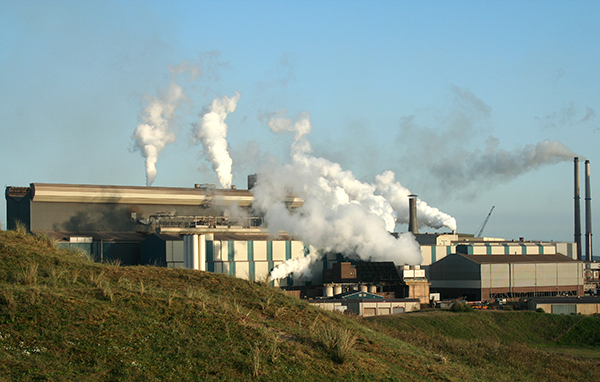In the history of mankind, the battle between environment and jobs, the latter have always won. But that is changing – people are no longer happy with the tradeoff. The most recent and closest to home example of this change is the case of the people of IJmond vs. Tata Steel. The inhabitants of the municipalities of Beverwijk, Heemskerk and Velsen, located in the IJmond region,are saying ‘no more’ to the pollution caused by steel giant Tata Steel. They are no longer willing to exchange their health for jobs: ‘either Tata Steel cleans up its act or shuts down’.
The steel company was founded in 1918 by the name of Koninklijke Hoogovens; in 1999 it merged with British Steel to form the Corus Group, which in 2007 was bought by the Indian company Tata Steel.
Lately, Tata Steel is in the spotlight, but for all the wrong reasons. The company is not only one of the biggest employers in the country, with over 11,000 direct employees, and creating another estimated 30,000 jobs at its supply companies, but also the largest CO2 emitter in the Netherlands due to the large amounts of coal burned to make steel. The steel plant also releases a lot of toxic substances which whirl down in the neighbourhood of the factory, putting people, especially children, at a greater risk of respiratory diseases and lung cancer. It has been known for years that Tata Steel pollutes and emits toxic substances. As early as 1952, the IJmuider Courant reported that more people died of cancer in IJmond than elsewhere. So why are people only complaining now?
First of all, there are now more people living in the area who do not work at the factory and demand a clean living environment. Second, people are more conscious about their living environment, health and climate. In May, 1,100 people and 8 foundations filed a complaint against Tata Steel. One issue is that the government is pushing the public to act to prevent climate change, but seems afraid to hold the real polluters – big industrial companies – to account. “On the one hand, the government does not want lead to end up in the environment, but a company like Tata still has a permit to emit 28,000 kilograms of lead annually. That’s bizarre,” says Jacob de Boer, professor of environmental chemistry and toxicology at the VU University Amsterdam, who himself lives close to IJmuiden. “We don’t even know how much is being discharged anymore. We go by what the company says. Well, take the poisonous Chromium-6 for example. According to Tata’s 2016 annual report, emissions amounted to 7.79929052 kilograms per year. 2017 annual report: exactly the same number. 2018 and 2019: ditto. How believable is that?” In early September, national health authority RIVM reported that the number of hazardous substances in the vicinity of the Tata Steel factory is tens of times higher than elsewhere in the country.
The chairman of the board of Tata Steel Netherlands, Hans van den Berg, took out a full-page advertisement in De Telegraafnewspaper and responded to RIVM report, saying: “I want to make you a promise. Tata Steel is going to change. I guarantee you that I will personally do everything I can to make this happen – you can trust me on that.”
Tata Steel announced that the company wants to make steel with hydrogen instead of coal, so that it will emit less CO2. The company also announced measures up to a value of 300 million euros to limit other nuisance, promising that by 2023, the precipitation of dust in the immediate vicinity will be reduced by 65 percent. However, we may not see any significant change for at least 10 years. Residents’ associations have said that Tata Steel should close immediately and only open again once the factory has changed to hydrogen. But is a shutdown of the company a real option? The Netherlands, after all, needs steel for automobiles, windmills and solar panels.
Various parties believe that Tata Steel should be nationalized to make production greener and healthier, but Stef Blok, minister of Economic and Climate Policy, fears that years of investment of taxpayers’ money will be needed to make ‘green steel’ profitable and, even then, the risk of failure is high. “If it can be profitable, then government intervention is not needed,” he said.
In light of the latest IPCC report on climate change, cases like that of Tata Steel can longer be brushed under the rug. With thousands of jobs on the line and the health of the people, not to mention of the planet, hanging in the balance, strong and immediate action is needed.
Written by Priyanka Sharma
